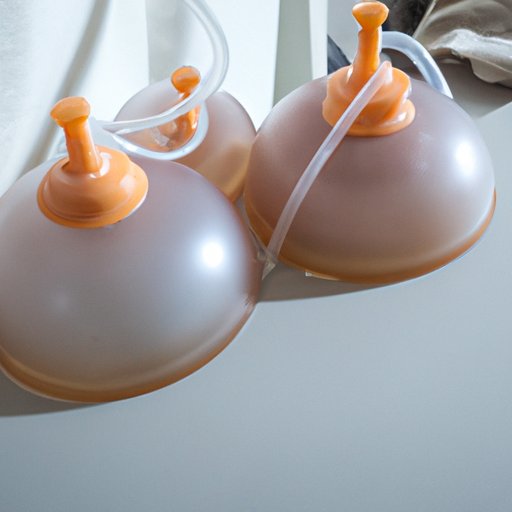
I. Introduction
As a breastfeeding mother, you may have heard of the popular haakaa, but may be unsure of how to use it effectively. This can lead to difficulty in maximizing its benefits, such as relieving engorgement and building a milk stash. The purpose of this article is to provide a beginner’s guide and tips for using a haakaa effectively, as well as troubleshooting common issues.
II. A Beginner’s Guide to Using the Haakaa for Breastfeeding
The haakaa is a simple yet effective breastfeeding accessory that is used to collect milk from the opposite breast while nursing. To use the haakaa, simply place the cup over the nipple and create suction by squeezing the base and attaching it firmly to the breast.
Make sure it is properly positioned and attached for the best results. Tips for achieving suction include making sure the base of the haakaa is free of moisture, using warm compresses to loosen the breast tissue, and tilting the haakaa slightly to ensure a good seal.
Using the haakaa during every feeding can help you collect and store more milk. However, it is important to remember not to attach it too firmly, as it can cause discomfort and lead to reduced milk flow.
III. Tips for Using a Haakaa to Build Up Your Breast Milk Stash
The haakaa can also be a helpful tool in building up a milk stash. You can use it to collect extra milk throughout the day, particularly in the morning when milk supply is highest.
Be sure to properly store the milk by pouring it into a breast milk storage bag or container and labeling it with the date and time. It can be stored in the refrigerator for up to four days, or in the freezer for up to six months.
IV. The Benefits of Using a Haakaa While Breastfeeding
Using a haakaa can offer a variety of benefits for breastfeeding mothers. It can help relieve engorgement and increase milk supply by removing excess milk from the breast. This can also prevent the risk of mastitis, a painful inflammation of the breast tissue.
Additionally, using a haakaa can provide a more comfortable and efficient breastfeeding experience, as it can help regulate milk flow and prevent oversupply.
V. How to Sanitize and Care for Your Haakaa
Proper sanitation and care of your haakaa is essential for maintaining its effectiveness and preventing contamination. After each use, wash it with hot, soapy water and rinse thoroughly. You can also boil it for a few minutes or use a sterilizer to ensure proper sanitation.
To store the haakaa, place it in a clean, dry container with a lid to prevent dust and debris from settling on it. Avoid storing it in a moist environment, as this can lead to mold growth.
VI. Troubleshooting Common Issues with Using a Haakaa
Mothers may face common issues such as difficulty creating suction or leaking while using a haakaa. If you are having trouble creating suction, try loosening the base and repositioning it, or using a warm compress to encourage milk flow.
If you experience leaking, you can adjust the position of the haakaa to prevent it from becoming too full. You can also use a breast pad to contain any leakage.
VII. Maximizing the Benefits of Using a Haakaa by Incorporating It into Your Daily Routine
The haakaa can be easily incorporated into your daily breastfeeding routine. For example, you can use it while pumping to collect extra milk from the opposite breast.
You can also use it during morning feedings to relieve engorgement, or after nursing to collect any leftover milk.
VIII. Conclusion
Using a haakaa can make breastfeeding easier and more efficient for new mothers, especially when it comes to building a milk stash. By following these tips and incorporating it into your daily routine, you can maximize its benefits and enjoy a more comfortable breastfeeding experience.




